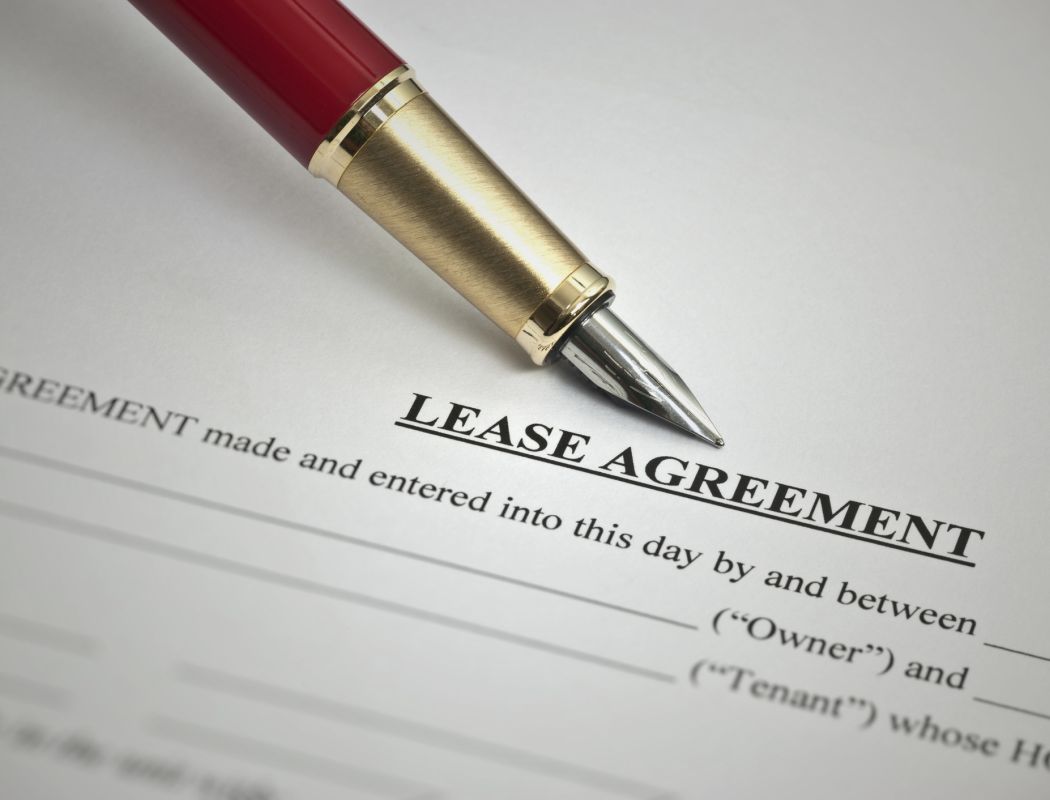- Call Us : 233(0)30 340 7825
- Email Us: info@prohust-law.com
P.O.Box SK 648, Sakumono - Tema
Book Appointment Locate our Office
You can locate our main office on the No. RP/16A/135 off Spintex Road Sakumono Junction in Community 16, Tema - Greater Accra, Ghana
Book AppointmentContact Info
- P.O.Box SK 648, Sakumono - Tema
- 233(0)30 340 7825
- info@prohust-law.com
- Week Days: 08.00 to 17.00 Sunday: Closed
Prohust Law Consult
Latest News & Articles
Excluding Liability Under A Contract
Articles & Blog Post Excluding Liability Under A Contract Excluding liability under a contract is common practice for suppliers or sellers. Most contracts have a limitation clause which caps certain liabilities at an amount often related to the value of the contract. A party can also use a clause to accept certain liabilities or exclude them altogether. Excluding liability, cap or accept? A limitation clause should set out: Risks each party accepts without limit. A party may accept unlimited liability for losses within its exclusive control, sometimes also giving an indemnity against those losses. It is also common for a limitation clause to state that the parties are not attempting to limit liabilities that cannot legally be limited. Risks each party accepts with a cap. The parties may list liabilities that are accepted subject to a cap. They may also impose a total cap on liability. Risks each party wholly excludes. For example, a supplier might list specific losses. A customer might prefer not to propose that any risks should be completely excluded. Excluding liability for everything is not possible Commercial colleagues or clients are likely to ask the drafter of a limitation clause “How much liability can we exclude? Can we exclude all liability?”. The answer is No, and the drafter will need to be able to explain why: You cannot exclude liability for your own dishonesty, even where UCTA does not apply. Unfair Contract Terms Act (UCTA). Where UCTA applies, there are more liabilities you cannot exclude, and others you can limit only where reasonable. A blanket exclusion of all liability would have little chance of passing this test. Interpretation risk. A clause should not be drafted as excluding liability for a party’s breach of all its contractual duties or leave a party without any meaningful remedy for breach. A clause that purports to do this might be void, or invalidate the contract, or be interpreted restrictively. A contract that seeks to exclude all liability may take longer to negotiate and have a negative impact on goodwill and the parties’ relationship. So, a draconian clause may look tough, but a more moderate position is easier to negotiate and more resistant to challenge, as a matter of interpretation as well as reasonableness. What you might seek to exclude completely Risks you cannot control A party may argue that, while it will accept risks it can control, it has to exclude those it cannot, especially those in the other party’s control. For example, between principal and overseas agent, only the agent has all the knowledge and ability to comply with local laws, so the agent should accept all the risk of non-compliance. A licensor might exclude the risk that its product infringes third party patents in some or all territories, on the grounds that it does not have the resources to carry out the necessary infringement checks. One party might be excluding liability for losses arising from a specified cause within the other’s control, or specified types of claim likely to arise from the other’s fault. For example, many software suppliers exclude liability for loss of data. Their argument is that the customer should never lose data if it has proper backup systems. Each party may accept responsibility for its own fault, while perhaps seeking to exclude or limit liability incurred without fault. A party can incur liability without fault under statute (for example, the Bribery Act 2010) or under absolute obligations contained in the contract. Risks you cannot afford, or that the other party should insure against A supplier will often seek to exclude certain categories of loss entirely. Its arguments for doing so might include that it is uneconomic for it to carry this risk, it cannot insure for it and/or the other party should properly insure for it. Excluding liability for indirect and consequential loss Parties often exclude all “indirect or consequential loss”. This is generally an easy win for the supplier in negotiations. However, as currently interpreted by English courts, this exclusion is often ineffective. It does not exclude most losses caused by a breach of contract, including financial losses. But does exclude losses that are, by definition, unusual and often irrecoverable by law. Other specific risks parties sometimes exclude It may be commercially acceptable to mirror in the contract the exclusions from the supplier’s insurance cover, so that the supplier is not exposed to uninsured losses, if these exclusions are not too widely drafted. Don’t bury the exclusions and limitations Parties who prefer not to draw attention to their exclusions and limitations must accept a higher risk of unenforceability. A drastic exclusion or limitation clause is easier to enforce if brought expressly to the counterparty’s attention during negotiations than if buried in irrelevant or inaccessible parts of the contract. This principle can affect: An inconspicuous term may be harder to incorporate in the contract The term’s visibility can affect its reasonableness and enforceability under UCTA (see Ampleforth Abbey Trust v Turner & Townsend Project Management Ltd [2012] EWHC 2137). If a party believes a burdensome term has been smuggled into the contract, it may seek rectification on the grounds that the executed contract does not reflect the parties’ agreement (as happened in Daventry District Council v Daventry & District Housing Ltd [2011] EWCA Civ 1153). Excluding Liability within limits It is common practice for supply or sale contracts to contain provisions excluding liability. At the same time it is important to note that exclusions should be drafted carefully and taking into account the points mentioned above. Being too aggressive could have negative consequences down the line and in some cases render the whole exclusion clause ineffective.
By admin March 8, 2023
Terminating a Contract – Tread Carefully
Articles & Blog Post Terminating a Contract – Tread Carefully Terminating a contract may be the way forward especially when the other party has blatantly failed to meet its obligations. But don’t fall into the trap of thinking that terminating a contract is straightforward. Giving the correct notice and reasons for terminating a contract is a process to be carefully navigated if the adversely affected party wants to claim all possible compensation. Examples of improper approaches to terminating a contract can be dramatic. In the case of Phones 4u Ltd v EE Ltd [2018], EE denied themselves a £200 million claim because of a badly drafted termination notice. Given the potential consequences it is generally assumed that an aggrieved party will take legal advice before going ahead with termination. Most importantly you must act. Even a repudiation, meaning the most serious breach of contract, does not automatically end a contract. Termination rights can also be lost by delay. By the time an aggrieved party decides to assert itself it may be too late. Things to be most wary of when terminating a contract Terminating a contract without the right to do so By terminating a contract you are refusing to perform any duties which may arise after termination. If not justified by a contractual or common law right this refusal to perform is usually itself a repudiation. The other party could accept the repudiation, terminate the contract and sue for damages. Giving the wrong grounds for termination This is what happened in the Phones 4u. In that instance EE terminated its contract with Phones 4u on the basis of its rights to terminate for the other party’s insolvency. EE did not explicitly state in its termination notice that Phones 4u were in breach of contract. Even though EE had reserved its rights in the termination notice the judge nevertheless ruled that EE’s £200 million claim against Phones 4u for breach of contract could not now be pursued. Not following the contractual termination procedure The basic rule is that a party serving a notice to exercise a right must comply strictly with the contract. Failing to comply may render a termination invalid even if the requirement is meaningless or pointless. In the case Zayo Group Internaitonal Ltd v Ainger and other [2017] the court ruled that a requirement to leave the termination notice at a party’s old address was still valid. Because the notice wasn’t left at the old address on time the claim failed. Serving an ineffective notice of termination could amount to a repudiatory breach as it communicates an intention to stop performing and may be accompanied by such action. You can’t take it back It is also important to note that you cannot take back a termination notice: Serving a termination notice communicates a party’s decision to exercise its termination right, which is not compatible with keeping the contract alive. In two employment cases, the employee who gave a clear unequivocal notice to resign was then unable to withdraw that notice after an hour in the case of Riordan v War Office [1959] and a day in Southern v Frank Charlesly & Co [1981]. Terminating a Contract – Common Law Rights Aside from express or implied termination clauses it is also important to consider common law rights when contemplating grounds for termination. The common law gives every contracting party the right to terminate on repudiation. A repudiation comes in different forms: Breach of a condition. Repudiatory breach of an intermediate term (or innominate term). Renunciation, defined as, a party’s outright refusal to perform all or substantially all its obligations under a contract. Impossibility, if a party makes it impossible to perform the contract. Understanding repudiatory breaches of intermediate terms is key when assessing your possible right to terminate a contract. Generally speaking, a breach of an intermediate term is repudiatory if it deprives the aggrieved party of substantially all the benefit of the contract. This deprivation must also coincide with the time that the aggrieved party chose to terminate.
By admin March 7, 2023
Subcontracting: An Overview
Articles & Blog Post Subcontracting: An Overview Subcontracting is seen in a number of sectors including construction, transportation, manufacturing and information technology. A subcontract will always be related to another contract – often called the ‘main contract’ or the ‘prime contract’. Two parties will have entered the main contract and then one of those parties may wish to subcontract some of their obligations. The scope of these subcontracted obligations can be as wide as the parties wish (subject to any subcontracting rules in the main contract). The key point here is that the main contract is still in place with the two original parties remaining liable to one another. The party to the main contract who subcontracts will therefore remain liable for any work undertaken by their subcontractor. Subcontracting – general For clarification we will use the following terms throughout this blog: Customer – the party to the main contract who is paying the Main Contractor for the work that the Main Contractor must carry out. Main Contractor – the party to the main contract who has agreed to carry out the work that the Customer needs. Subcontractor – the third party who has been subcontracted by the Main Contractor to carry out some or all of the work that the Main Contractor has agreed to carry out under the main contract. In general, the Customer is obliged to accept the Subcontractor’s performance if the Subcontractor fulfils all that the Main Contractor had agreed to do under the main contract. Although this may not suit the Customer, if they failed to expressly prohibit subcontracting in the contract they will be deemed to have consented to the subcontract, unless they can bring themselves within the scope of one of the legal restrictions on subcontracting. Subcontracting – liability This is the way the chain of liability will work in a subcontracting relationship: if the Subcontractor’s work does not fulfil its assigned obligations in the main contract, the Customer will be able to sue the Main Contractor for breach of the main contract, and the Main Contractor will be able to sue the Subcontractor for breach of the subcontract: Customer ↑ Main Contractor ↑ Subcontractor It would seem therefore that the Subcontractor would not be liable to the Customer. This is not always the case, however. A Subcontractor could be liable in tort, for example, where the Subcontractor is found to owe a duty of care to the Customer and is negligent in carrying out the work such that they, for instance, cause physical damage to the Customer’s property. Back-to-back or stand-alone? The term ‘back-to back’ agreement is used to refer to a particular kind of subcontract. This expression is used when all of the terms used in the Main Contract are incorporated by reference into the back-to-back subcontract. They are normally used when the rights and duties of the Subcontractor in relation to the Main Contractor closely mirror those under the main contract. Creating a back-to-back agreement might be as simple as changing the names of the parties on the main contract and including a ‘back-to-back’ clause therefore transferring all the duties in the main contract to the subcontractor. However, as we discuss in the next section, this can create problems. In a full back-to-back subcontract agreement, the Main Contractor is essentially a front man for the Subcontractor. As such, the Subcontractor will normally be willing to assume full liability for the performance of the works as defined in the main contract, and there is often little difference in the pricing or wording of the two contracts. In a partial back-to-back agreement, the Subcontractor agrees to discharge some but not all of the main contractor’s obligations under the main contract. A stand-alone subcontract agreement can be read and understood without reference to the main contract. The clauses in this sort of subcontract might have little in common with those in the main contract. The Main Contractor will need to be careful to ensure all the relevant obligations and liabilities are still passed to the Subcontractor. Disadvantages of back-to-back agreements Many reasons are given for being wary of back-to-back agreements. These include: A mirror back-to-back layout will most likely not be appropriate for every clause in a main agreement. Careful consideration should be given to the question as to whether the simple transfer of an obligation from the main agreement to the back-to-back agreement will result in obligations that achieve the original intention of the parties and that they are enforceable. Provisions that might not ‘back-to-back’ neatly include intellectual property, confidentiality, limitations of liability, liquidated damages and data protection. Example: The main contract says that the Main Contractor will keep the Customer’s (as defined above) intellectual property confidential. The back-to-back subcontract will then say that the Subcontractor will keep the intellectual property of the Main Contractor confidential. This is wrong. The subcontract should say that the Subcontractor will keep both the Main Contractor’s and Customer’s intellectual property rights confidential (or any other arrangement agreed by the parties)! Where there are multiple subcontractors and a complicated specification in the main agreement it can be difficult to work out which obligation falls on a particular subcontractor. Defining the subcontractor’s scope of work may result in as much effort as the drafting of a stand-alone subcontract. A back-to-back contract is only as good as the main contract. The customer might be content to have simple sweeping obligations in the main contract, but the main contractor might see the need to spell out more detailed obligations in a tailor-made subcontract. Should we have a standalone (not back-to-back) contract? It depends on the context. As the answer will usually require careful analysis it is advisable to seek professional guidance. The solution we usually come up with is a hybrid – a back-to-back contract which also covers those areas in the contract where simply back-to-backing rights and obligations doesn’t work. Restricting subcontracting The following are ways in which subcontracting can be restricted: The main contract expressly or implicitly prohibits subcontracting. ...
By admin March 7, 2023
Deed of Variation of a Lease: a trap for Tenants
Articles & Blog Post Deed of Variation of a Lease: a trap for Tenants If a deed of variation to extend the term of a lease seems too good to be true, that is because it is! I have written before about how to make a commercial lease simple. One of the key points I wanted to make then is that when we make something like this simple, we are managing a complex process in a seemingly simple way. I also noted the dangers of over-simplification. One of the most infamous examples of that is the Deed of Variation of a Lease which extends the term of a commercial lease. I have also said before that commercial leases are one of the most unregulated areas of law, but this instance is an important exception. Deed of Variation of a Lease – The Traps The apparent extreme simplicity of a Deed of Variation of a Lease which extends the term of a commercial lease makes it tempting for tenants not to bother with legal advice. However, the apparent simplicity is deceiving: The first issue to understand is that this document is NOT a lease extension. A residential lease can be extended but the law of commercial leases is completely different. The term of a commercial lease cannot be extended. A commercial lease can be renewed – meaning the tenant is granted a new lease of the same (or similar) property and the terms of the new lease depends on the negotiations and whether or not the tenant has security of tenure. The Deed of Variation of a Lease which apparently extends the term of an existing commercial lease is really doing something quite complicated: the law automatically deems this to be both a Deed of Surrender of the current Lease and the grant of a new Lease. In other words, what the documents says and what the document actually does, are quite different! That begs the question, why use such a document at all? Why not just use a document which says what is does (i.e. which really is simple)? Often, such a Deed of Variation of a Lease also includes a clause stating something like the following: “the Tenant hereby gives notice to the Landlord of its wish to terminate the Lease on (date).” If you think about it, that’s a bit odd. Why, at the start of the Lease, would the Tenant give the Landlord notice to terminate the Lease on the day that the Lease will anyway end? This seemingly innocent looking clause is actually terminating the tenant’s security of tenure rights. Security of tenure rights are so advantageous to a Tenant that any other mechanism to exclude them from a lease or to terminate them requires the tenant to go through a number of steps. Indeed, it is much easier to change the rent than to exclude security of tenure: the tenant must receive a special warning notice and then sign a special declaration after a “cooling-off period” of at least 14 days or swear a statutory declaration in front of a solicitor or commissioner for oaths who is not at all connected to the transaction. In that way, the law seeks to ensure the Tenant is certain what it is giving up. The mechanism of a simple clause in a Deed of Surrender is an anomaly: the only instance when a simple clause in the main document can succeed in removing the Tenant’s security of tenure without any notices, declarations or statutory declaration – even though this document does not actually call itself a Deed of Surrender! Even if the surrender clause is removed, if the Deed of Variation of a Lease is only giving a very short new lease term, the tenant may lose the right to use its security of tenure to get a new, longer lease afterwards and may only be able to get a new, very short lease. Deed of Variation of a Lease – Some of the Unintended Consequences for the Tenant As the so-called Deed of Variation of a Lease is actually deemed to be a Deed of Surrender and a new Lease, that means the Tenant still needs to consider all the following issues: As it is actually a new lease, the tenant may have liability to pay Stamp Duty Land Tax. However, note that this is not a new lease that ends when the old lease finishes. This is a new lease which starts on the same day that the old lease started but ends at a later date! The potential tax liability can be substantial. Often tax relief is available on the overlapping period but that is certainly not always the case and in any case there is now a reasonably complex (and completely unnecessary) tax return to deal with It may need to be registered at the Land Registry. Failure to register the new lease properly (i.e. as a new Lease and not just as a Deed of Variation of a Lease) can have serious consequences, for example, the lease can become void as regards the legal estate and it actually takes effect as an agreement for lease, which is hardly a safe place for your business. The parties will not have considered who is going to make any Land Registry applications and there will be no express obligations imposed on the other party to provide evidence of identity or assist with requisitions by the Land Registry. If the landlord’s interest is mortgaged, the deemed surrender and regrant may not only put the landlord in breach of the terms of its mortgage, but potentially lead to serious complications for the Tenant. The Landlord may not even have the power to accept a surrender, which would mean the “Deed of Variation of a Lease” is void and the original lease remains effective. The deemed surrender and regrant of an underlease may breach the terms of a superior lease and make it liable to forfeiture. It is common for leases to contain ...
By admin March 7, 2023
Damages For Breach Of Contract
Articles & Blog Post Damages For Breach Of Contract The principal (but not the only) remedy in English law for breach of contract is an award of damages. This blog focuses on the law of damages for breach of contract where damages are awarded by a court to compensate for the injured party’s loss. This blog does not cover “liquidated damages”, which are defined by the parties under the terms of the contract as specific amounts payable in the event of a party’s default. Damages for breach of contract: the general rule for compensation In English law, the purpose of an award of damages for breach of contract is to compensate the injured party for loss, rather than to punish the wrongdoer. The general rule is that damages should (so far as a monetary award can do it) place the claimant in the same position as if the contract had been performed (Robinson v Harman (1848) 1 Ex 850). Damages for breach of contract are, therefore, essentially compensatory, measuring the loss caused by the breach. To put it another way, the damages enquiry involves comparing the position the claimant is in fact in, following the breach, and the position the claimant would have been in but for the breach. Accordingly, the awards are often called “expectation damages”, because they seek to put the claimant in the position it expected. The net loss is calculated by quantifying all the harms caused by the breach and then deducting or crediting all the benefits caused by the breach. Damages for monetary loss The majority of damages for breach of contract award compensation for financial loss. This takes many forms, including costs or liability the claimant has incurred to a third party (but would not have incurred but for the breach), and profits the claimant has foregone (that is, would have earned but for the breach). Difference in value or cost of cure In many cases, even though the defendant has breached the contract, the claimant can pay for a third party to cure or reinstate so as to put the claimant in as good a position as if the defendant had performed. For example, the claimant might pay for repairs to rectify a breach of warranty of quality by a seller of goods, or a partial non-performance by a builder. Where already incurred by the time of trial, such a cost will be recoverable from the defendant providing it was not so unreasonable as to be a failure to mitigate and/or a break in the chain of causation. Where the cost of cure has not been incurred at the date of trial, it will only be recoverable where incurring the cost would be “reasonable” in all the circumstances. This is because a claimant will always have a choice not to cure the problem caused by the breach. A claimant may instead, either simply live with the consequences, or use the market to offload unwanted or defective property and replace it with better property. The presumption of breaking even and “reliance loss” In seeking to prove loss, the claimant benefits from a rebuttable presumption that but for the breach the claimant’s venture would have broken even. This means that if the claimant has already incurred costs but not yet had a chance to complete the venture, it is presumed that the breach which halts the venture caused the claimant to lose revenue equal in value to the expenditure already incurred. This is important in cases where it is impractical for the claimant to prove the profits it would have made from a venture. For example, in Anglia Television v Reed [1972] 1 QB 60, a TV company entered into a contract with an actor to take part in a film, the actor broke the contract and the film could not be made. In that case the claimant was unable to say what the profit would have been had the actor performed the contract, but because of the presumption of breaking even, the claimant was able to recover the wasted expenditure it had incurred. Damages for breach of contract: Lost management time A particularly well-established application of the presumption of breaking even is the award of damages for lost management time. If, as a result of the defendant’s breach, the claimant’s staff are diverted from their usual tasks in order to investigate the breach or deal with the consequences of the breach, the claimant can recover its net cost of the staff (that is, their wages). This is not because that cost was itself caused by the breach. (Unless the staff were employed specifically to deal with the breach, their cost would have been incurred even but for the breach.) Rather, it is presumed that the claimant would have earned revenue from the staff at least equal to their cost to the claimant if they had not been diverted from revenue-producing activity but for the breach. In Azzurri Communications Ltd v International Telecommunications Equipment Ltd [2013] EWPCC 17 Birss J observed that: “if the breach can be said to have caused diversion of staff to an extent substantial enough to lead to a significant disruption of the business then it is reasonable to draw the inference of a loss of revenue equal to the cost of employing the staff.” Damages for breach of contract: Loss of profit A claimant may prove that had the defendant’s breach not occurred, it would have earned greater revenue than its expenditure (that is, done better than broken even, and so has lost profits). Whenever a claimant is successful in a lost profits claim, it is because it proves exactly this. Alternatively, a defendant may prove that a claimant would not have broken even, or indeed that the claimant has suffered no loss because its venture or bargain was a bad one and the claimant would have made a loss but for the breach. For example, in Ampurius Nu Homes Holdings Ltd v Telford Homes (Creekside) Ltd [2012] EWHC 1820 (Ch), the defendant construction company avoided paying substantial damages by showing that the ...
By admin March 7, 2023
Mergers and Acquisitions
Articles & Blog Post Mergers and Acquisitions Mergers and acquisitions is a general term that describes the consolidation of companies or assets through various types of financial transactions. How the transaction is communicated to shareholders, employees and the board plays a role in determining whether a deal is considered a merger or acquisition. What is a merger? A merger is the combination of two companies, who are roughly the same size, which form a new legal entity under the banner of one corporate name. Each company’s board of directors negotiate the merger, seeking to maximise the efficiency of each party’s business once merged. For example, it is likely beneficial to merge two sales teams – each pre-existing team can benefit from the client list of the other’s. Yet it may be less efficient to merge two HR teams, as one, slightly expanded, HR team may be sufficient. This may lead to salary adjustments or redundancies. The complexities, and problems, typically increase with the scale of the deal. As a new corporate entity is being created, both companies must seek shareholder approval. It is more typical that where companies are merged, shareholders on both sides of the deal retain the equivalent value in their previous shares when the new company is created. Broadly speaking, there are two main types of mergers: (1) horizontal, and (2) vertical. A horizontal merger is where two competing companies which produce/provide broadly the same goods/services. The textbook example of this type of merger is Exxon’s 1998 merger with Mobil to form the modern oil & gas company ExxonMobil. A vertical merger is where two companies in the same supply chain merge, for example, where a drinks producer merges with a bottle manufacturer. EBay merging with PayPal in 2002 is a strong example of this type of merger. Other types of merger include a conglomerate merger (where two companies without goods/services or client crossover merge) or a congeneric (where two companies without goods/services crossover, but operate in the same markets, merge). An increasingly common form of merger is a Special Purpose Acquisition Company (SPAC) merger, where a new special purpose corporate vehicle raises funds via an initial public offering (IPO) to purchase an existing (non-listed) company. That way, the existing company does not have to go through the strenuous IPO process. The popular dating app Grindr has recently undergone a SPAC merger. What is an acquisition? An acquisition is where one company purchases another company outright. The buyer is usually much larger than the purchased company, meaning that the former absorbs the business of the smaller company. In a simple acquisition, the acquiring company obtains the majority stake in the acquired firm, meaning that its name or organisational structure does not change. Acquired companies can either be integrated into the larger business or held as a separate subsidiary. In some cases, not every part of a target company will be acquired. It is possible for an acquirer to purchase only particular assets; this has the benefit of obtaining the most valuable parts of another company to that business without taking on other, less profitable, portions – or the existing liabilities (e.g debts) over the target company. Understanding the difference between a merger and an acquisition Whilst companies may have similar motives for merging with or acquiring another company (accessing a different/larger market, eliminating competition, acquiring intellectual property), the type of acquisition depends primarily on motive. A merger can only occur where both companies fully accept and intend to gain from the deal. Whereas an acquisition can take place even without the consent of the target company. This is called a ‘hostile takeover’. Although there are circumstances where a target company can consent to an acquisition; in some cases a cash injection may be extremely beneficial to a target company. How long does the M&A deal process take? It varies. Most deals take several months. Generally, the more complex the deal is, the longer it will take. The due diligence needed for complex deals is likely to take a greater amount of time. M&A – Step by Step Merger There are generally 8 steps involved in a merger. 1. Planning Firstly, there is a lot of planning involved. You should identify any areas in your business and sector where there are growth opportunities. You should also give your merger an approximate timescale, allowing for extra time as the process often runs for longer than expected. The aim of the transaction should be assessed, as well as how the end operating model will look. 2. Identifying suitable candidates Then, you should make a checklist of what you are looking for in a candidate. Consider the location of their offices, what business areas they can offer, what kind and size of business you want and their culture. Contact suitable candidates to inform them of your intentions for a merger and acquisition, informing them that they have been identified as a candidate. 3. Assessing companies After identifying any suitable candidates, you should create a shortlist and remove any you do not wish to progress with. 4. Valuation After you have created your list of suitable candidates, you will receive financial information from those who are also interested. Usually this information will only be provided under a non-disclosure agreement. Following this, a final analysis should be conducted, including the value of the company and the financial possibilities after a merger. You should assess the strengths and weakness of a merger with each candidate. 5. Negotiations At this stage, you should present your proposals for the merger to the chosen company, negotiating between you. Once both parties have agreed and reached a deal they are both happy with, a term sheet can be drawn up by the parties’ lawyers which will capture the key elements of the commercial deal. 6. Transaction documents Once the term sheet is signed off, legal due diligence can begin and the share purchase / asset purchase agreement drafted and negotiated. There are other ancillary documents that will ...
By admin March 7, 2023





